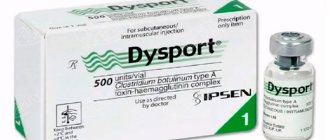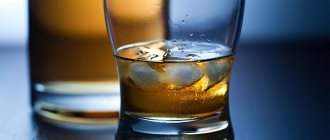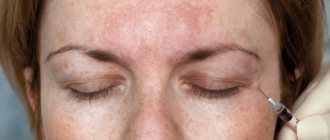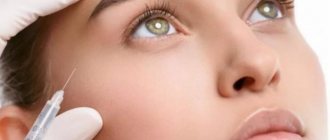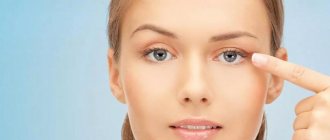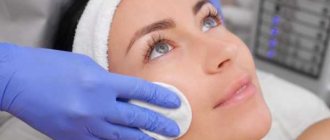What is Botox?
Botulinum toxin injections, such as Botox, are used to relax facial muscles and make lines and wrinkles less obvious. Botox is the most commonly performed cosmetic procedure used to reduce or eliminate the appearance of fine lines and wrinkles through minimally invasive injections. These injections contain botulinum toxin A, a therapeutic muscle relaxant (a muscle relaxant). The toxin immobilizes the muscles that are responsible for the repetitive actions that cause wrinkles.
Botox cosmetic is a purified protein neurotoxin that is used to relax the muscles of the face, mainly around the eyes and forehead. Botox® has been used safely for more than 10 years to treat many cosmetic and medical problems.
Botox typically begins to work 3-5 days after treatment, and it can take up to two weeks to achieve full effect. Approximately 5 days after the procedure, the treated area becomes relaxed, giving the face a renewed and rested appearance, without distorting its normal expression. Botox results last about 4-6 months.
Precautionary measures
When can you sunbathe after Botox injections?
Two or three weeks after the procedure, if there are no adverse reactions on the skin, you can sunbathe in a solarium or in the sun.
In this case, you should follow simple rules:
- On dry skin, you need to apply a high-quality sunscreen with a protection factor of 50.
- Before going out in the sun, put on a wide-brimmed hat and sunglasses.
- Only a month after the procedure you can go to the solarium. The duration of the first session should not exceed 2 minutes to avoid possible adverse reactions in the future.
What types of peeling are there?
According to the method of exposure to the skin, all types of peeling can be divided into two groups: chemical and physical.
What is a chemical peel?
Chemical peels use liquids designed to remove dead cells from the surface of the skin to promote the growth of new cells. In this procedure, a chemical solution is applied to the skin, the top layer of the epidermis is “burned” and ultimately peeled off. New skin usually looks smoother.
There are many types of chemical peels based on the use of glycolic acid, salicylic acid, and mixtures of various ingredients. They differ in peeling depth and cosmetic result. Peeling not only induces the removal of old skin cells, but also stimulates collagen synthesis, which improves the structure and tone of the skin. The skin becomes elastic and its ability to retain moisture increases.
Chemical peels can be used to achieve the following goals:
- reduction of wrinkles under the eyes and around the mouth;
- correction of wrinkles caused by photodamage and aging;
- improving the appearance of soft scars;
- treating certain types of acne;
- reduction of age spots, freckles and hyperpigmentation.
Based on the depth of impact, there are superficial, medium and deep peelings. Superficial peeling acts in the upper layers of the epidermis. Medium peeling affects the entire epidermis, including the papillary dermis. Deep peeling can change the reticular dermis.
Superficial peeling
Superficial peeling is a mild chemical peel that is safe for use on all skin types. Typically, superficial chemical peels use mild reagents such as glycolic acid or AHA, glycolic acid. Since it only removes the most superficial layers of skin (the epidermis), this peel is ideal for smoothing fine lines and wrinkles, treating roughness, dryness, and photodamage. Treatment takes only 10-15 minutes. Results are visible immediately, although repeat treatments are recommended for best results.
Medium peeling
Medium (medium) peeling causes a second degree burn on the skin. A medium peel is used to remove cells in the upper and middle layers of the skin (upper dermis). A medium peel typically uses a peeling agent such as trichloroacetic acid, known as TCA. It penetrates deeper than glycolic acid, so TCA peeling can remove wrinkles, pigmentation and other skin imperfections. Skin recovery takes longer and can last up to six weeks.
Deep peeling
A deep peel is a harsh chemical peel that can penetrate multiple layers of skin and effectively treat problems such as deep wrinkles, severe age spots, sun spots, etc. For deep peeling, phenol is usually used. Deep peeling affects the skin down to the lower part of the dermis. After the procedure, some people experience swelling for two weeks, and redness of the skin can last up to three months.
A deep peel is a long-lasting “one-time” treatment, so it usually does not need to be repeated, unlike superficial and medium peels.
When restrictions are lifted
The total rehabilitation period for all patients is 14-15 days. For some, Botox spreads faster, for others it spreads more slowly. If you are going to a solarium or to hot countries on vacation before the end of the recovery period, consult a cosmetologist.
The specialist will conduct an examination, evaluate the result and determine the stage of the Botox effect. Only after this will he decide on the possibility of lifting restrictions.
Experienced doctors recommend refraining from aggressive procedures, which include tanning, for 1 month. In this case, the effect of the toxin will be one hundred percent, and the likelihood of complications will be minimal.
Physical methods of peeling
Microdermabrasion (diamond peeling)
Microdermabrasion is a non-surgical, usually painless treatment that helps minimize wrinkles, improve skin tone, reduce acne scars and blemishes, reduce pore size, and create smoother skin. Microdermabrasion involves abrading microcrystals into the top layer of the skin (stratum corneum) to remove dead cells.
Microdermabrasion stimulates blood flow to the surface of the skin, promoting accelerated cell regeneration and collagen synthesis. These treatments can result in up to a 30% increase in skin elasticity.
Microdermabrasion is a particularly good alternative for skin types sensitive to chemical peels. Microdermabrasion can be combined with other treatments, such as laser treatments, to achieve more dramatic aesthetic results.
Laser resurfacing
Laser skin rejuvenation, or laser peel as it is often called, removes damaged outer layers of skin and stimulates the production of collagen and new skin cells in the underlying layers, resulting in smooth, youthful, healthy-looking skin.
The two types of lasers most commonly used in laser resurfacing are carbon dioxide (CO2) and erbium. Erbium laser is used for surface treatment. The CO2 laser is more powerful, but less accurate, and affects the deeper layers of the skin. The laser heats the tissue, evaporates water and burns skin cells.
Laser peels can be performed to reduce the appearance of fine lines and wrinkles, acne scars, age spots, moles and blemishes. It can also improve the overall texture of the skin. The laser can stimulate collagen production in the lower layers of the dermis.
After laser resurfacing, recovery takes about two weeks. Pink or red skin tends to last longer, sometimes up to several months. After treatment, new skin takes over the treated area, which appears smoother, firmer and healthier.
Treatment areas include crow's feet at the corners of the eyes, lines around the mouth, and deep wrinkles from the nose to the corner of the mouth (nasolabial folds).
Ultrasonic peeling
Ultrasound machines use sophisticated sound wave technology to penetrate deep beneath the surface of the skin. The acoustic wave promotes cell renewal and regeneration, improves blood circulation, stimulates lymphatic drainage, and fights swelling. Ultrasound treatment is considered a safe, simple and gentle method of skin rejuvenation.
Ultrasonic vibrations cause cavitation, a brief phase change in a water molecule. Cavitation gently removes dead cells from the surface and cleanses the follicles without irritation or inflammation.
Botox and chemical peeling
These procedures actually complement each other and can easily be combined, being allies in the fight against wrinkles. Botox (Dysport) is injected into the muscles while a chemical peel is performed on the surface of the skin. There are no contraindications even for performing these two treatment procedures on the same day, if we are talking about superficial peeling with salicylic acid. It is even safer to perform chemical peels within 3 days after Botox injections.
Some doctors recommend that patients wait 2 weeks to allow Botox to relax the muscles and smooth the skin. Chemical peeling (superficial or medium) will have a more effective effect on a smooth rather than wrinkled surface. In addition, peeling does not eliminate facial wrinkles caused by muscle hypertonicity. Botox can enhance the anti-aging effect of the peel. Peeling eliminates photoaging problems (pigment spots, poor skin texture), and Botox improves dynamic lines.
General recommendations after Botox procedure
After toxin injections, experts recommend paying attention to the following points:
- For 2-3 hours you cannot bend over or lie down, but you must do exercises for facial muscles. You need to actively grimace, make faces, frown.
- To soothe the skin and relieve swelling, you can apply a mask, but this should be done carefully, without injuring the skin.
- If injections were carried out in the area around the eyes, it is recommended to drink less water at night and follow a diet without salt and spicy foods. You need to adhere to this regime for 10-14 days.
- Do not use sunscreen or sunbathe.
- You should not use peelings or scrubs for 14 days.
- Do not take too hot showers or baths. Thermal procedures will promote the resorption of the substance.
- For six months, facial massage, microcurrent therapy and myostimulation are prohibited. Any impact on the muscles should be postponed; they require complete rest.
- Doctors also advise not to combine the use of drugs of the tetracycline group and aminoglycosides. Also, subcutaneous administration of vitamins B1 and B6 helps reduce the effect of the toxin.
We recommend reading the article about melanin for tanning. From it you will learn about the role of melatonin in tanning, how and what cream to use, the use of melanin in tablets, injection ampoules and the characteristics of injections, as well as possible complications after artificial production of melatonin. Find out more about the expiration date of sunscreen here.
You can visit a solarium after Botox, but only after consulting with a cosmetologist. The recovery period depends on the individual characteristics of the body. Only careful adherence to all the rules after Botox will allow you to get the desired result.
Botox and microdermabrasion
Microdermabrasion and Botox are treatments for completely different skin problems. Microdermabrasion removes the top dead layer of skin cells to leave skin smooth and soft. Additionally, removing these old cells stimulates the growth of new ones. Researchers note that men's skin ages more slowly than women's. They believe that one of the reasons for slow aging is daily shaving, which stimulates skin renewal. Botox injections into problem areas can remove wrinkles, especially around the eyes and forehead. Microdermabrasion changes the texture and color of the skin's surface. These two methods go very well together.
If the patient receives Botox at least a day or a week before microdermabrasion, it will relax the muscles and reduce the number of skin wrinkles and folds. In this case, microdermabrasion can provide additional smoothness to the surface of the skin. It is safe to receive Botox injections immediately after microdermabrasion. The reverse sequence is not safe. Within 24 hours of Botox injections, any procedure that places pressure on Botox-treated areas may cause migration of the drug and lead to an undesirable effect.
How long does the effect of Botox last?
The positive effect after the Botox procedure can last from one month to six months.
It all depends on the following factors:
- On the quality of the injection drug.
- On the number and regularity of procedures.
- From the characteristics of a particular person’s body.
- From following all skin care rules after the procedure.
- From the qualifications and professionalism of the master.
When can you visit a solarium after a Botox procedure?
Only after permission from the cosmetologist, if there are no adverse reactions on the skin, can you go to the solarium.
Botox, laser and ultrasound
Some scientists believe that laser and ultrasound can negatively affect the results of Botox injections. There has been a case of migration of Botox injected within 24 hours before laser treatment, presumably as a result of edema and swelling.
Botulinum toxin used in combination with hardware resurfacing techniques can cause more collagen to accumulate in the skin and improve cosmetic results. This effect may be due to the lack of movement of neurotoxin-treated areas in which collagen resorption is slowed. When recovering from laser treatment, the skin will heal better if it moves less. Botox helps reduce movement, which leads to better results.
Botulinum toxin treatment should occur at least one week before the resurfacing procedure to ensure the full effect of Botox. These procedures cannot be performed at the same time because the swelling after laser treatment can lead to migration of the Botox and unwanted side effects such as brow ptosis or facial paralysis.
Botox injections are combined with hardware procedures as follows: Botox injections are performed, after 2-3 weeks the skin is peeled with a laser or ultrasound.
Reasons for the ban
Any activity affects muscle groups. When running or jumping, the muscles of the face shake, the heart begins to work harder, which causes the pulse to increase and blood circulation to accelerate. Such processes are dangerous due to the spread of Botox to nearby tissue structures.
On this topic
- Botox
Botox in nasolabial folds
- Olga Aleksandrovna Kalinina
- August 30, 2020
The substance has a pronounced diffuse degree, due to which it easily enters the adjacent intercellular space. If the procedure is performed correctly and the patient follows all medical recommendations, there are no adverse reactions. However, migration of the drug during sports activities causes complications.
During exercise, your body temperature increases. To reduce it, the body secretes sweat. Moisture often penetrates into unhealed injection marks. This is especially true for the first days after Botox. Most often, a slight tingling sensation appears, but sometimes pathogenic microorganisms penetrate along with the liquid, infecting the wound.
Exercises also significantly accelerate metabolic processes in cells and tissues, which results in the risk of premature removal of the substance from the body. Botulinum toxin affects muscle structures for only a few months, after which you need to wait for permission from a cosmetologist for a second session.
Often, people with an active and healthy lifestyle use micronutrient complexes that shorten the period of effective action of the product. It is highly not recommended to take B vitamins.
The compatibility of Botox and sports also leads to weakness, migraines, dizziness, deterioration in general health, fever, loss of appetite and a sharp change in blood pressure. Because of the consequences, professional athletes should think carefully about the advisability of an injection. Moreover, they have an accelerated metabolism, due to which the substance is eliminated ahead of time.
On this topic
- Botox
Is there compatibility between Botox and antibiotics?
- Olga Aleksandrovna Kalinina
- August 30, 2020
You should not exercise after Botox due to the risk of developing the following complications:
- Ptosis . Most often, drooping of tissue structures occurs after treatment of the space between the eyebrows. The upper eyelid, together with the eyebrow, hangs over the organ of vision. This condition occurs on both one and both sides.
- Asymmetry of facial features. Negative factors prevent the drug from being distributed evenly. Because of this, the position of the cheeks, corners of the lips, eyes, wings of the nose or eyebrows changes on the left or right. This is a temporary process that resolves after 2-3 months or after the product is completely removed.
- Muscle paresis . Due to diffusion, the poison accumulates in one area, causing the paralyzed face to resemble a wax mask.
- Visual impairment . If the toxin gets through the membrane of the eyeball, then reversible or lifelong problems will appear.
In case of serious changes, additional cosmetic procedures are required to restore the appearance. In addition, the combination of physical exercises with botulinum toxin is dangerous due to worsening breathing, hoarseness, swelling, bruising, digestive disorders, involuntary release of tears, redness of puncture sites, and itching. However, such side effects most often go away on their own after 2-3 days and do not require auxiliary therapy.

